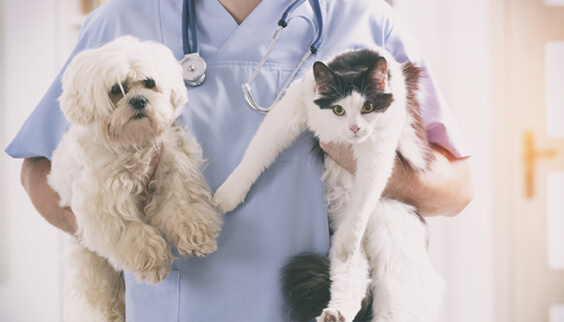Spaying and Neutering Pricing:
Additional Fees May Apply:
Drop-Off and Pick-Up:
Spaying and Neutering Information
Want to make your appointment?
*Please enter a custom address when scheduling
Need records? Click HERE to request them.
Why is spaying and neutering important?
Spaying helps prevent uterine infections and breast tumors, which are malignant or cancerous in about 50 percent of dogs and 90 percent of cats. Spaying your pet before her first heat offers the best protection from these diseases. Neutering your dog/cat prevents testicular cancer and some prostate problems. Overpopulation can be detrimental to the health and wellbeing of the community and individual animals. Spaying/Neutering helps to keep the population in check.
As a precaution to our staff, if you feel your dog is reactive or a bite risk, please bring them already muzzled.
Spay and Neuter FAQ
Spay and Neuter FAQ
Should we let our female have one litter before spaying her?
No. Females should be spayed before the first heat, which usually occurs at 5-6 months of age. We stress that this be done before her first heat, since a female can become pregnant at that age and she is in no way ready for it. Pregnancy will place a great strain on the animal’s system, often resulting in birth defects, and she may not be able to nurse, resulting in seriously malnourished offspring. In addition, early spaying prevents later problems, including mammary tumors, uterine infections, and uterine tumors. If a female is allowed to go through a heat before spaying, those problems may still arise later in life because estrogen is stored in her system as a result of the heat.
How old should my pet be before the surgery?
Kittens and puppies can be spayed or neutered at 8 weeks of age as long as they weigh at least 2 pounds. If females are spayed before their first heat (which usually occurs when they are 5-6 months old), breast cancer can be almost completely prevented. Younger pets also recover more quickly from the surgery and experience less pain following surgery than older pets. We do not do surgeries on pets 7 and over without approved bloodwork.
Is the surgery painful?
Yes, the surgery can be painful. However, we provide all pets with very effective pain medication that lasts up to 24 hours after surgery and offer additional take-home pain medication for purchase.
What’s an E-Collar?
An Elizabethan collar, E-Collar, or pet cone, (sometimes humorously called a pet lamp-shade or cone of shame) is a protective medical device worn by an animal, usually a cat or dog. Shaped like a truncated cone, its purpose is to prevent the animal from biting or licking at its body while the surgery site heals.
My pet just had a litter. When can I spay her?
We recommend spaying dogs when their puppies are 5 weeks old and can be away from their mom for the day. We recommend cats get spayed when their kittens are 5 weeks old as well. However, if you have an outdoor cat or a cat that you think may not be able to wait that long, we can spay them sooner. This is occasionally necessary because they can go back into heat and get pregnant while still nursing their kittens. It is okay for the mother to go back to nursing after her spay.

What does the tattoo look like and where is it on my pet?
The tattoo is 1/2 to 1 inch long, straight line in green ink located right by the surgical incision. It will fade a little after the skin heals.
Why tattoo pets?
The tattoo program was started so that we comply with the highest standards of the Spay-Neuter Task Force guidelines. These guidelines were established to protect our wonderful patients and ensure they are treated safely and effectively. The tattoo is meant to be a permanent identification that your pet has been spayed or neutered.
Can’t veterinarians tell if my pet is spayed or neutered without the tattoo?
Sometimes. Of course, this would only be an issue if your pet were lost or in a shelter without its medical history. With newer dissolvable suture materials, there are no stitches to feel in a female’s belly to indicate she was already spayed and if they have surgery at a young age, there is no scar to see. In male dogs, if you can’t see or feel a scar, there is a possibility that the dog still has testicles, but they never dropped into the scrotal sac (cryptorchid). The doctor would open the male dog up like a spay to look for those testicles, a painful and unnecessary surgery that could have been prevented with a permanent identifying mark.
How do I make an appointment?
Please make an appointment here.
For additional questions, call (512) 260-3602 EXT: 104 or email clinic@txhh.org.